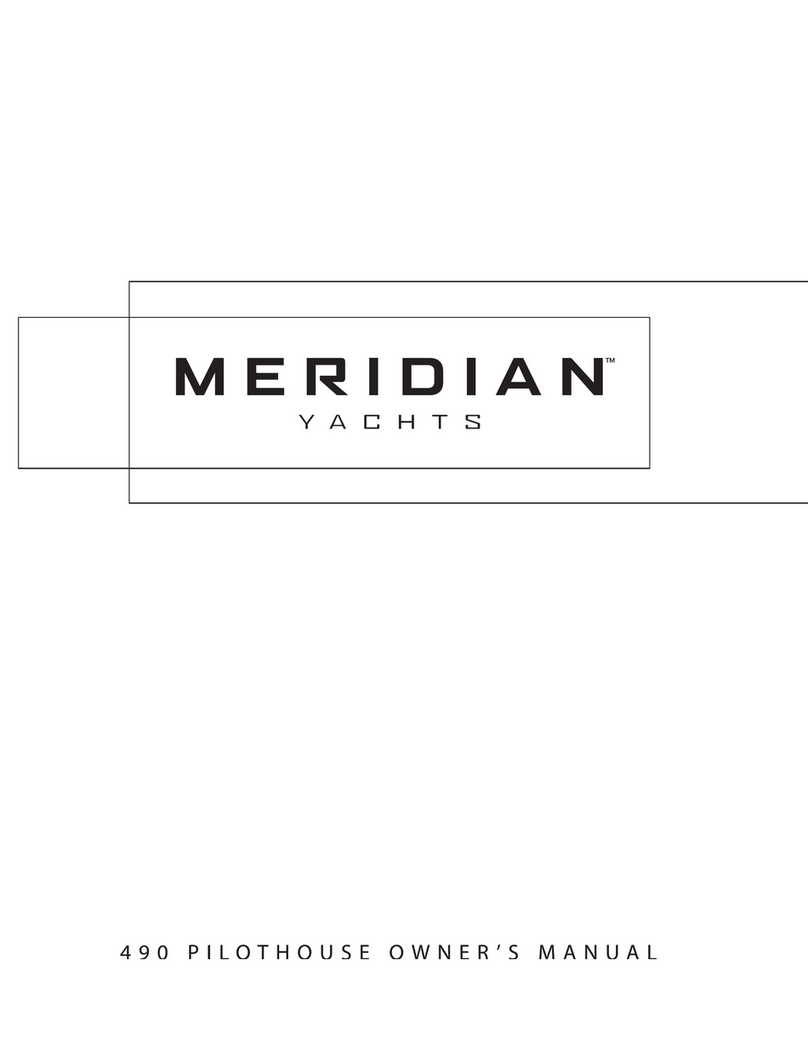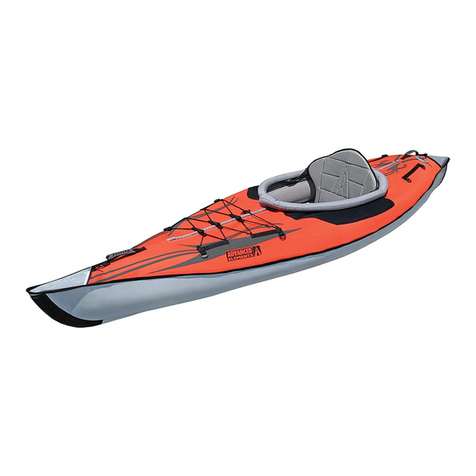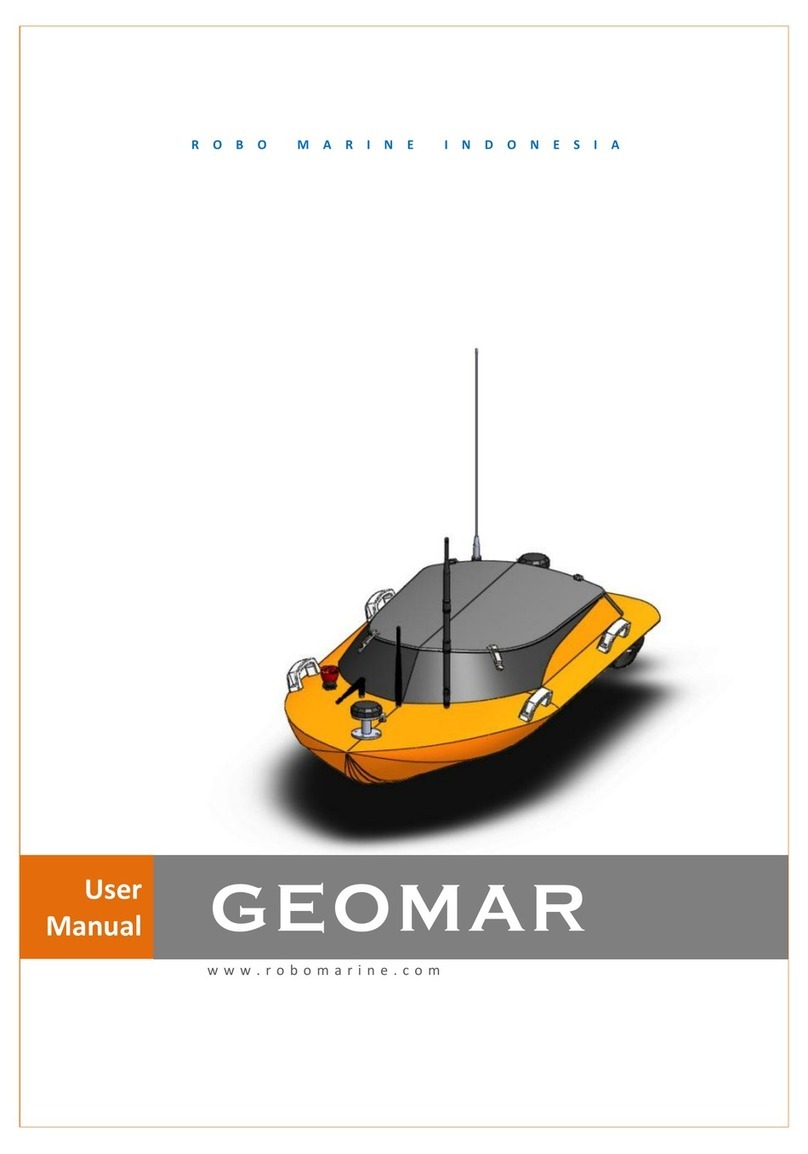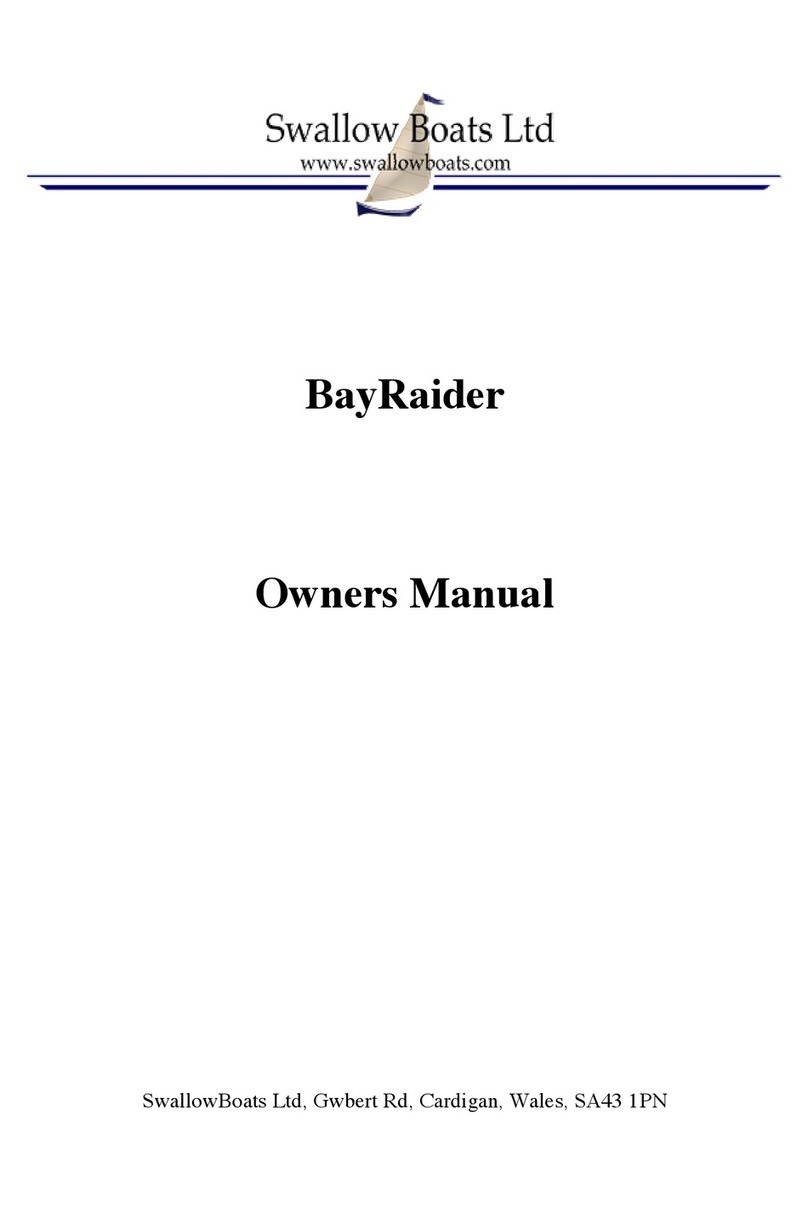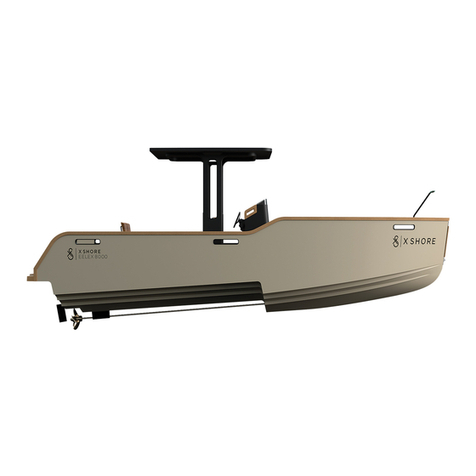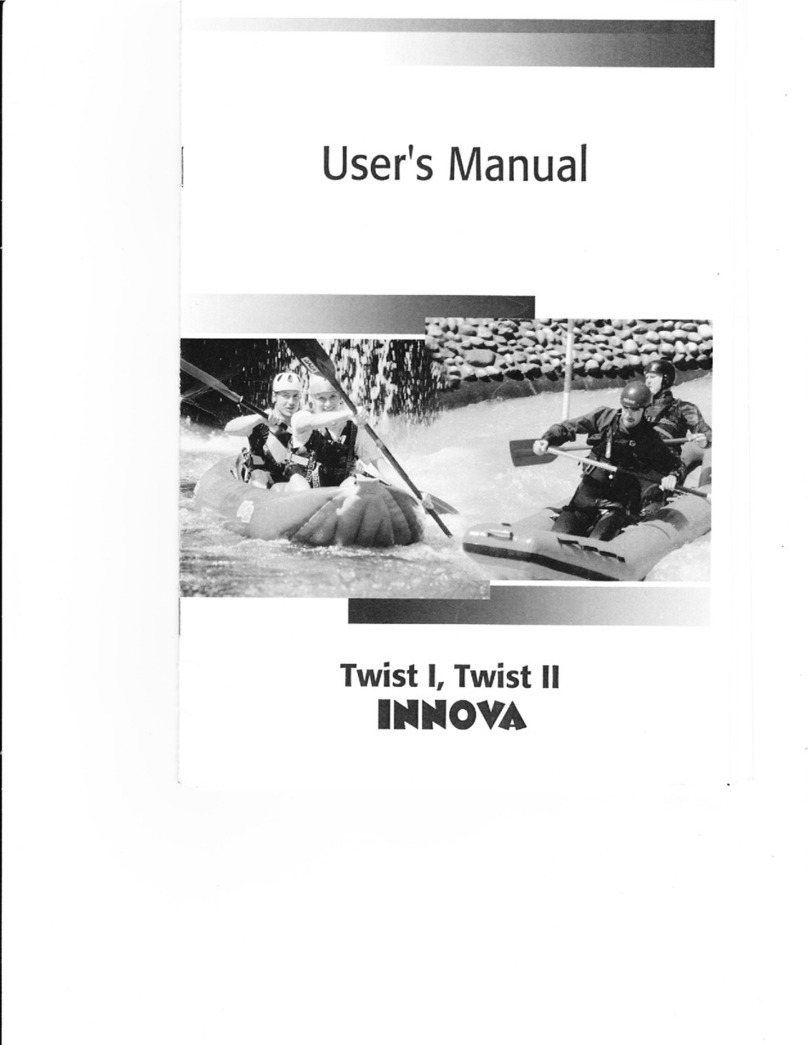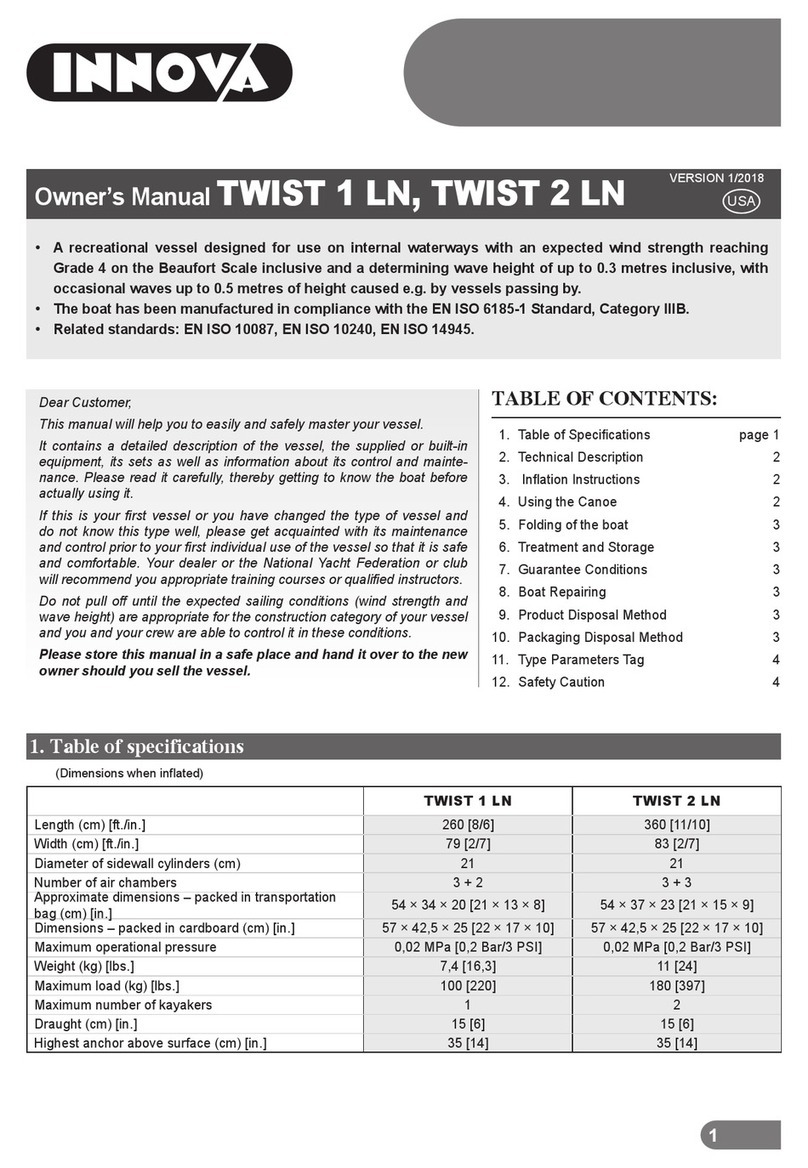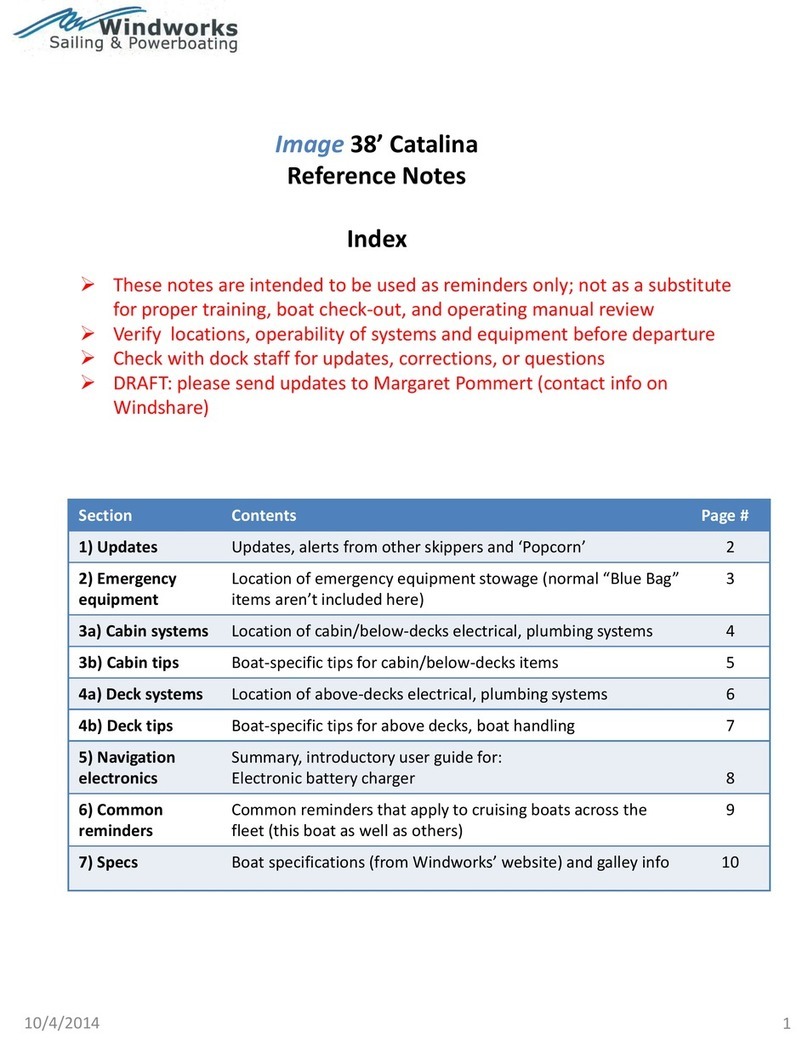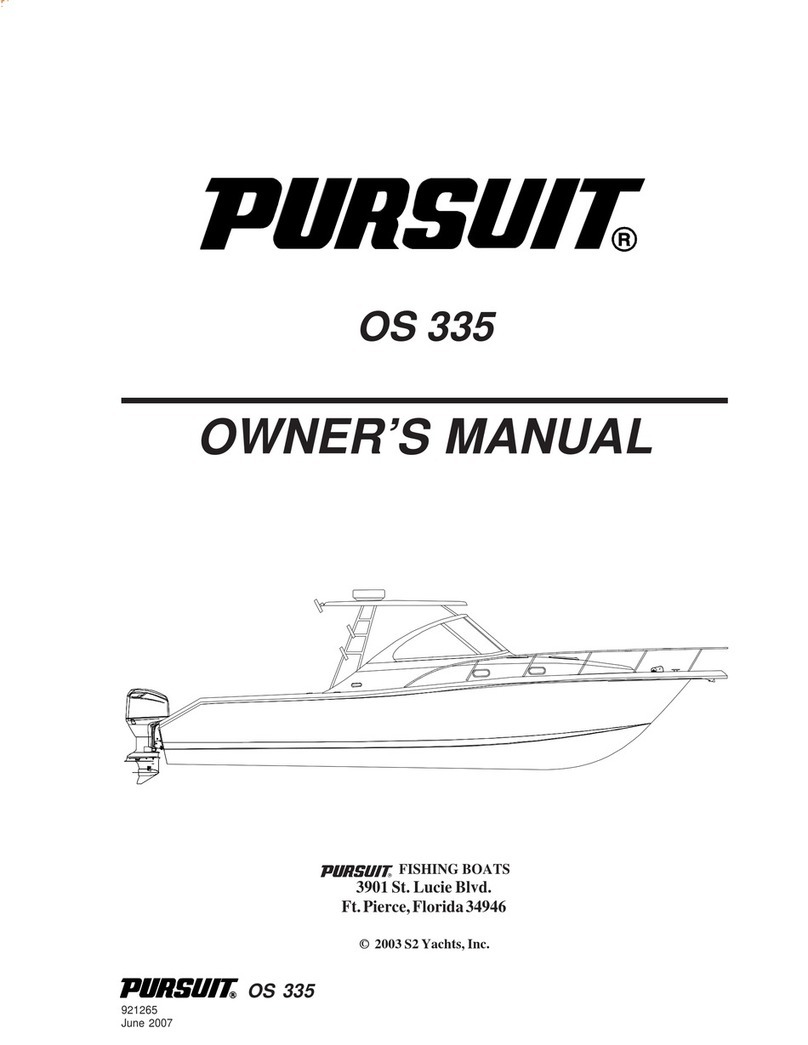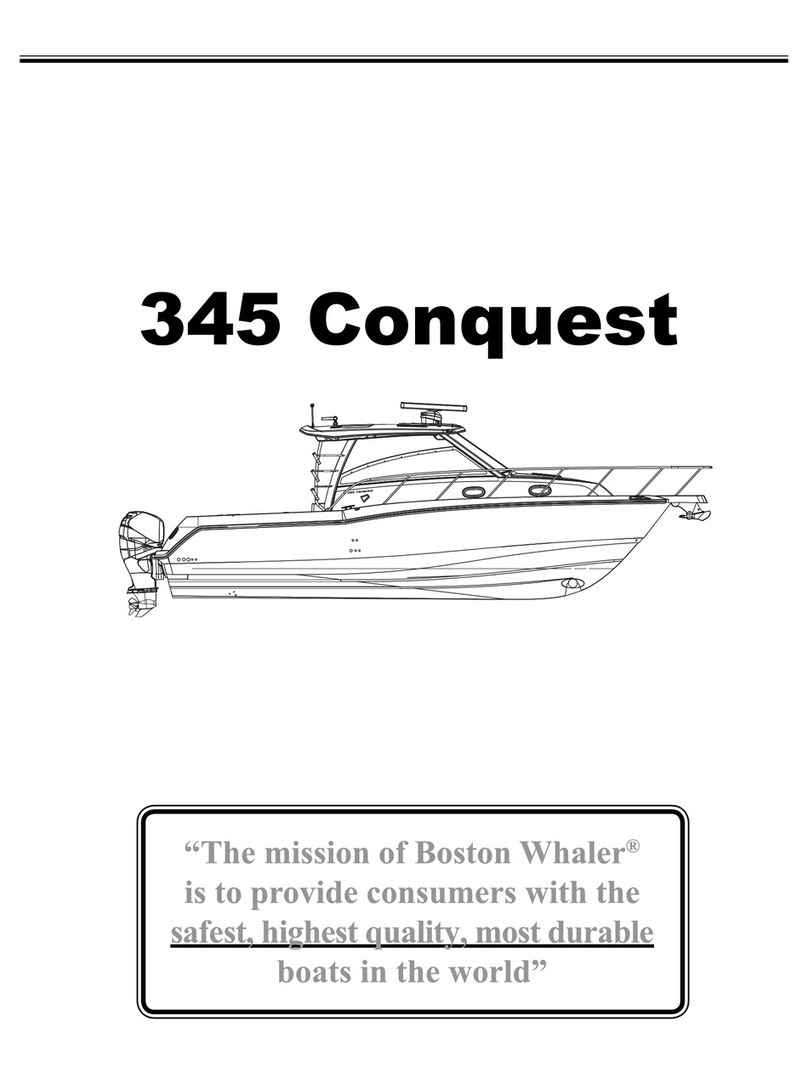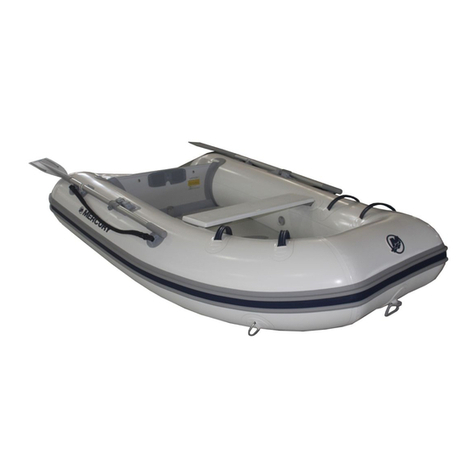
2
2. Technical description – see Fig. 1
1. side tube
2. bottom
3. PUSH/PUSH valve - it allows inating/deating, regulation
and measurement of pressure with a pressure gauge (pla-
ced below the top part of the boat)
4. pressure-relief valve (placed below the top part of the boat)
5. front seat with a back-rest
6. rear seat with a back-rest
7. foot-rest (placed below the top of the boat)
8. plastic handle
9. manufacturer‘s label
10. yellow „WARNING“ label (sewn into the edge of the kayak)
12. bungee netting
13. black zip with slider
14. anchoring for foot-rest attachment (detail A)
15. anchoring of the rest on the tube (detail B)
16. attachment of the rest to the kayak reinforcement (detail B)
17. seat attachment
18. reinforcement attachment (placed below the top part
of the boat - Fig. 2)
19. tracking n attachment
20. kayak reinforcement
ACCESSORYSUPPLIEDWITHTHEKAYAK:
Single-seat version - reinforcements Nos. 1 and 2. Two-seat
version - reinforcements Nos. 3, 4, 5. Belt for strapping the fol-
ded kayak, user‘s manual with the warranty certicate, sponge
in a netting bag, repair kit containing glue, patches and valve
adaptors.
3. Inflation Instructions
Unfold the kayak. If you intend to use a tracking n, slide it in
the attachment in the bottom (19). Attach the foot-rest (7) to
the anchoring (14) in the bottom; for correct passage of the
strap through the buckle, see Detail A. Attach the seat to the
anchoring in the bottom (17), the back-rest to the anchoring in
the tube (15) and in the reinforcement; for a correct passage
of the straps, see Detail B. Slide the labelled kayak braces
into the specied brace holders (see Figures 2 a, b, c d) so
that the marking is matched. NOTICE! Each reinforcement
is different; they may not be replaced! Always slide the rein-
forcements from the stem (the Innova logo is printed on the
stem) in the following order: single-seat version - Nos. 1 and
2; two-seat version - Nos. 3, 4, 5.
The air chambers shall be inated in the following order: side
drums (1), bottom (2). For the ination it is favourable to use
a foot pump or piston pump with using the valve adapter - see
Fig. 3b (the adapter is a part of the gluing kit). Before the start
of inating, check the condition of the valves. Set the valves
to the Closed position. For the way of operating of the valve
see Fig. 3. Inate the air chambers until they are rm but not
completely stiff. The air chambers should provide a feeling
comparable to squeezing a ripe orange. You can check the
exact operating pressure by using a suitable pressure gauge
(optional accessory) - see Figure 3a. The wrench for the in-
stallation of the valve - see Fig. 3c - is an optional accessory.
ATTENTION
Themaximum operationalpressure inair chambers
is 0.02 MPa. If the ambient temperature increases
(e.g.owingtosunlight),thepressureintheairchambers
ofthekayakcanriserapidly.Werecommendreleasing
someairfromallairchambersofthekayakafterpulling
itoutofthewater.Thiswillpreventpossibledestruction
oftheairchambers.However,donotforgettocontinu-
ously check air pressure in the chambers afterwards,
too.Acorrespondingreductioninoperatingpressureis
upto20%within24hours.
ATTENTION
Whenusingtheboat,alwayssealthevalveswiththeir
valvecaps.Thiswillkeepdirtoutofthevalves.Dirtcan-
causeleakyvalveseals.
4. Riding the boat
The SWING kayak is a single-seat inatable kayak. Whenever
the kayak is used on waterways, Waterway Traffic Rules
should be observed.
The operation of the SWING inatable kayak does not require
any licence, provided that the people who operate the kayak
know the techniques of small boat operation to the extent
required for its operation as well as the valid navigation rules
of the particular country.
The SWING kayak is designed for use on rivers up to Difculty
Grade WW 2. It can also be used on lakes. The kayak is par-
ticularly suitable for beginners due to its simple and compact
design and easy manoeuvrability. The space on the stern
can be used for storing baggage. The person travelling in the
kayak sits on the bottom of the kayak with their back leant
against the backrest and their feet leant against the foot-rest.
The person travelling in the kayak should wear a flotation
life-jacket. Use a double-blade kayak paddle with a length
of (200 - 230) cm.
ATTENTION
Priortousingthekayak,checkwhetheritisnecessary
toobserveanyspecialregulations,restrictionsorrules
connectedwiththeriver,surfaceofwaterorareain
whichyouintendtouseit.
Theboatisnotdesignedtobetowedbehindmotorboats,
normayitbetowedotherwise,draggedorin anyway
subjected to unusual stress. Sharp edged or pointed
itemscarriedinthekayakshouldbesafelywrapped.
Placeallvaluablesintoawaterproofcontainerandfas-
tenittothekayak.
Overtime,sunlightadverselyaffectstherubbercoating
oftheboat;therefore,itisadvisabletostoretheboatin
shadeeachtimeafteruse.
CAUTION:
• Onlargesurfacesofwater(seasorlakes),payattention
to water currents and off-shore breezes. Currents
andbreezesmaymakeitimpossibletoreturntoshore.
• TheSWINGkayakshouldnotbeusedinchallenging
conditions,suchasindecreasedvisibility(night,fog
orrain).

